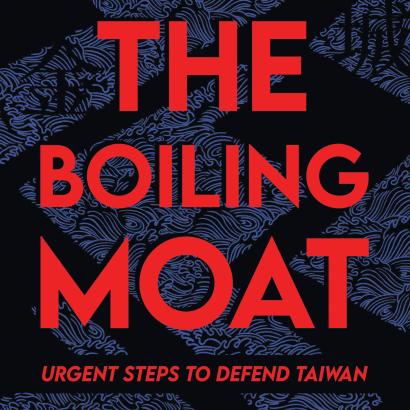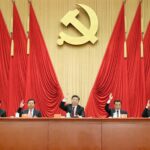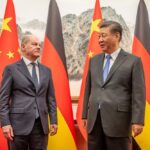Summary by Geopolist | Istanbul Center for Geopolitics:
The book “Will Taiwan’s Future Be Settled in Washington?” from Foreign Policy examines the shifting dynamics of Taiwan’s geopolitical status and the increasing role of Washington in determining its future. Here are the key points:
Taiwan’s Strategic Importance
- Geopolitical Significance:
- Global Focus: Taiwan’s strategic location in the Asia-Pacific region and its role in global supply chains, especially in semiconductor manufacturing, make it a focal point of international attention.
- U.S. Interests: The United States views Taiwan as a crucial ally in countering China’s growing influence and maintaining stability in the region.
U.S. Policy and Influence
- Bipartisan Support:
- Political Consensus: Both Democratic and Republican administrations in the U.S. have shown strong support for Taiwan, emphasizing its importance in regional security and global technology supply chains.
- Military and Diplomatic Support: The U.S. has increased military and diplomatic support for Taiwan, including arms sales and high-level visits, to strengthen its defense capabilities and international standing.
- Strategic Calculations:
- China’s Reaction: Beijing views U.S. support for Taiwan as a challenge to its territorial claims and a threat to regional stability. This has led to increased tensions and military posturing in the Taiwan Strait.
- Taiwan’s Position: Taiwan is navigating its own domestic and international challenges, balancing its desire for increased global support with the need to avoid provoking Beijing.
Potential Outcomes
- U.S. Role in Taiwan’s Future:
- Influence on Decisions: The article suggests that the future of Taiwan may increasingly depend on Washington’s decisions and policies, given its central role in the region’s security dynamics and its strategic partnership with Taipei.
- Long-Term Implications: The outcome of Taiwan’s situation will likely be shaped by ongoing U.S. actions and its ability to balance support for Taiwan with managing relations with China.
- Global Implications:
- Regional Stability: Taiwan’s future will impact broader regional stability and international relations, particularly in the context of U.S.-China competition and the global technology supply chain.
Overall, the book highlights that Taiwan’s future is closely intertwined with U.S. policy and actions, making Washington a key player in shaping the island’s geopolitical destiny. The increasing focus on Taiwan in U.S. strategic calculations reflects its significance in global security and economic contexts.
For more details, read the full review here below.
The Boiling Moat: Urgent Steps to Defend Taiwan, edited by former Trump administration Deputy National Security Advisor Matt Pottinger, aims to exhort the United States and like-minded allies to proactively take steps to protect Taiwan. It’s a double-sided book—one part making the case that there’s an imminent threat, the other part actual proposals for Taiwan’s defense.
With recommendations from no less than former U.S. Secretary of State Mike Pompeo and a quote from the doyen of U.S.-China studies Orville Schell comparing Pottinger to Paul Revere, the book clearly aims to sound a clarion call over Chinese threats to Taiwan. It’s an agenda largely focused on raising the alarm in Washington—and which tends to overlook issues in Taiwan itself.
Pottinger’s background shapes his approach. He served as deputy national security advisor from September 2019 to January 2021 under the Trump administration, playing a key role in shaping hawkish policies. His career before that was an unusual one, spending seven years in China as a journalist before joining the U.S. Marine Corps as a military intelligence officer in 2005 and serving three tours of duty in Iraq and Afghanistan. At the same time, Pottinger has since broken ties with his former boss, testifying against him over the Jan. 6, 2021, U.S. Capitol riot.
In making the case for urgent action by Washington, Pottinger is quick to compare Chinese President Xi Jinping to Russian President Vladimir Putin, suggesting that Xi could follow Putin’s example in Ukraine—in spite of how uncoordinated and largely unsuccessful Russia’s assault has been. Yet Pottinger is sometimes frustratingly vague on the exact timeline he foresees for a successful takeover of Taiwan. That’s annoying, because evaluations of how successful Taiwan’s defense can be are highly contingent on timelines for how long Taiwan can hold, as well as when or if foreign powers become involved.
Much of this messaging is aimed at making sure Washington is involved. In a chapter co-written with Gabriel B. Collins and Andrew S. Erickson, Pottinger makes the case for the global impact that an invasion of Taiwan would have, highlighting the large role that Taiwan plays in the global manufacturing of semiconductors and the dangers of nuclear proliferation that would take place after.
It’s surprising that Pottinger discusses contemporary Taiwan’s importance primarily in terms of its dominance in global semiconductor manufacturing. After all, Taiwanese giant TSMC only took a key place in the global imagination of Taiwan’s importance after the COVID-19 pandemic, after supply-chain shortages suddenly made the world keenly aware of how dependent it had become on Taiwan for semiconductors—while the United States has had a stake in Taiwan’s defense for nearly eight decades.
And to make his argument as to why China might, in fact, be hasty in launching an invasion, Pottinger downplays the costs China would face, both in terms of economic impact and political legitimacy—especially if it failed. In this vein, Pottinger and his co-authors argue that war is not likely to break out by accident but would most likely take place by Xi’s deliberate design—and that optimism about the low likelihood of war, in fact, is all the more likely to contribute to its possibilities.
Matt Pottinger (center) arrives for the opening ceremony of the Belt and Road Forum in Beijing on May 14, 2017. Mark Schiefelbein/Getty Images
Pottinger’s view of Chinese aggression is surprisingly black and white. Pottinger sees China as likely avoiding intermediate scenarios such as attacking outlying islands, on the grounds that this would potentially lead to a buildup of Taiwan’s armed forces, much as Ukraine had many years to prepare after the invasion of Crimea. The potential invasion is largely discussed as an all-or-nothing scenario in which China commits to a full-throated invasion of Taiwan regardless of the costs, or does not do so. Gray-zone tactics involving intrusions into Taiwan’s Air Defense Identification Zone or maritime harassment of Taiwanese vessels are discussed primarily as building up to and testing the waters for an invasion.
Pottinger and company likely hope that alarm will lead to concrete action. Yet the counterargument is that hyperbolic warnings about imminent action by China over Taiwan, rather than more grounded assessments as to China’s current capacities and willingness to take action, could lead to greater disbelief, even complacency about when and if China does finally act. After all, such warnings may be taken as the boy who cried wolf. Likewise, belief that conflict over Taiwan is inevitable could become a self-fulfilling prophecy—and raise the odds of this actually occurring if the involved parties all view this as bound to happen sooner or later.
But there’s merit in some of the book’s practical recommendations, especially in the chapters that are not written from an American perspective, contemplating the role that Japan, Australia, and Europe could play in a hypothetical conflict. Discussion of Japan, for example, contemplates how Tokyo may need to act independently of the U.S. in a potential conflict, instead of as an adjunct to the U.S. military. Likewise, discussing the role that Europe could play touches upon the idea that shoring up Ukraine could help Taiwan. Kyiv’s fall could set a negative precedent that reverberates worldwide, encouraging other dictators.
Even so, these recommendations are largely policy-based, with relatively limited discussion of how elected politicians and the public audience that they answer to would react to measures intended to constrain China regionally. This is particularly visible in the chapter written by retired Vice Adm. Yoji Koda, in which there is little discussion of public pushback against efforts by successive Liberal Democratic Party governments to re-interpret Japan’s constitution to allow for the fighting of war. But it’s also evident in the chapter on Australia, where the country’s alliances with the United States and, by proxy, Taiwan are much discussed and little settled.
Otherwise, Pottinger and company’s recommendations are mostly not unique or new. Pottinger calls for scaling back conventional reliance on tanks, fighter jets, and warships for Taiwan, while also exhorting the United States to speed up munitions production for Taiwan. Pottinger draws an analogy to the development of COVID-19 vaccines in record time through Operation Warp Speed during the pandemic and suggests that there is a need for a similar effort to speed up arms production for Taipei.
In the meantime, Pottinger calls for Taiwan to improve its military budget, streamline the military, and cultivate social attitudes more amenable to conscription or the integration of military affairs into civilian life, along the lines of Israel. Indeed, Israel comes up continuously as a proposed model for Taiwan to follow, with relatively little discussion of the intrinsic differences between both nations. Israel is surrounded by potential foes with few natural terrain borders; Taiwan is an island and benefits from the steep logistical challenges of mounting a beachhead invasion.
This is in line with efforts by the United States to push Taiwan toward asymmetric defense, as proved highly successful in Ukraine. After all, the Chinese People’s Liberation Army will always be larger as a fighting force, and this is a reality that Taiwan will always have to live with. It is not surprising to see former Chief of the General Staff Adm. Lee Hsi-ming’s proposals in favor of asymmetric defense cited positively, with reference to how the popularity of Lee’s book shows that the Taiwanese public has an appetite for public conversations about defense.
Taiwan’s military personnel maneuver during a military drill in Taitung, Taiwan, on Jan. 31.Annabelle Chih/Getty Images
But at the same time, Taiwanese perspectives are curiously neglected. For example, part of the Taiwanese government’s caution toward asymmetric defense is that this strategy would make Taiwan more reliant on the United States. American shipments of arms to Taiwan have been plagued by continual delays in past years. And it’s difficult for the Taiwanese armed forces to be told to scale back the traditional weapons platforms that they are built around.
Taiwan knows that the U.S. could prove a mercurial ally depending on who sits in the White House—indeed, the Japan chapter notes that this is also a concern in Tokyo when it comes to Washington’s volatile politics. U.S.-skeptic discourse has been on the rise in Taiwan in recent years, thanks in large part to the actions of former U.S. President Donald Trump—in whose administration, of course, Pottinger previously served.
U.S.-skeptic discourse mostly comes from the pan-Blue camp, consisting of the Kuomintang (KMT) and its political allies, which came to Taiwan in the wake of the Chinese Civil War and ruled over Taiwan as the sole political party during the authoritarian period. While the KMT only maintained power for so many decades thanks to U.S. backing, today the KMT party base has shifted to pursue rapprochement with its historic enemy, the Chinese Communist Party—and the corollary for some is that traditional allies such as the United States must now be demonized.
Tourists watch as a Chinese military helicopter flies past Pingtan Island, one of mainland China’s closest points to Taiwan, on Aug. 4, 2022. Hector Retamal/AFP via Getty Images
But the U.S. handling of the invasion of Ukraine—and the consequent debates about to what extent the U.S. should aid Ukraine and whether such aid should be indefinite or whether Ukraine should be pushed toward negotiating with Russia—was noticed in Taiwan. Since the invasion of Ukraine, there has been increased discussion in Taiwan of the need for self-reliance, given the potential for the United States to only offer arms and aid at a distance.
The Tsai administration linked Taiwan’s fate to that of Ukraine, as fellow democratic countries facing authoritarian threats, in its political messaging. It is expected that the newly inaugurated Lai administration will follow suit. Beyond just rhetoric, however, the Tsai administration called on the United States to maintain support of Ukraine, in that an end to support for Ukraine would give political ammunition to the pan-Blue camp, which questions America’s commitment to Taiwan.
Such dynamics are largely undiscussed in Pottinger’s book. Although Taiwanese domestic politics is not the main purview of The Boiling Moat, for a book ostensibly about Taiwan, there is curiously little about Taiwan itself. This includes a strange lack of discussion of the impact of Taiwanese domestic politics on its defense strategy, or about the dynamics of the U.S.-Taiwan relationship in past years.
While The Boiling Moat does gather practical proposals for Taiwan, mixed with ideological exhortations on the U.S. to come to Taiwan’s assistance, there is still a lack of attention to the perspectives from the ground level in Taiwan. Pottinger is hardly alone in this; the great blind spot of U.S. policymakers about Taiwan has always been the nation, and its people, itself.
Source: Foreign Policy









